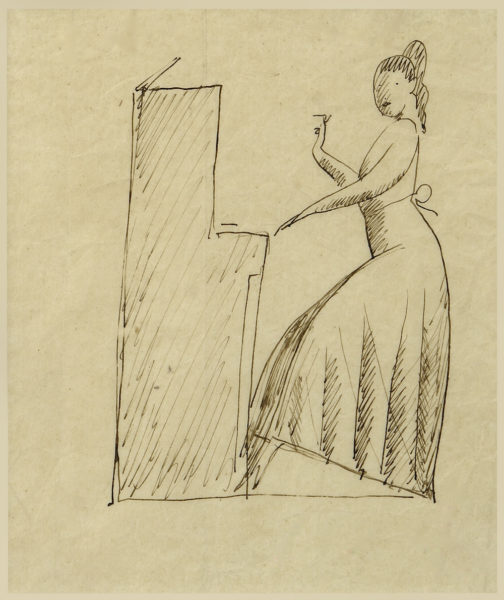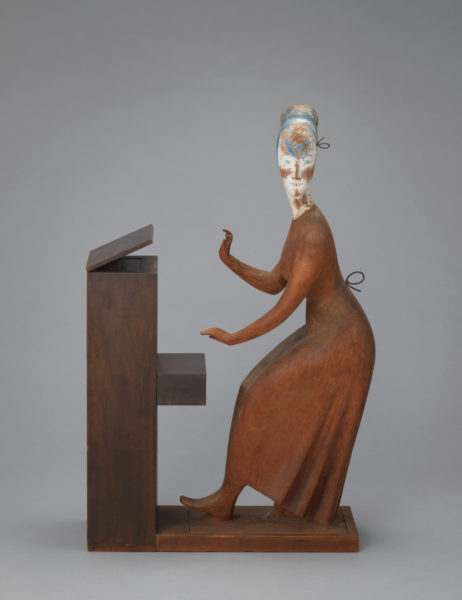Study for Woman at Piano, ca. 1917
Elie NadelmanInk on paper
7 × 6 inches
Provenance
Alexander Racolin Collection, Briarcliff Manor, New York
Zabriskie Gallery, New York
Gallerie Vallios, New York
Bernard Goldberg Fine Arts, LLC
Best known for his figural sculptures, Elie Nadelman was also a gifted draftsman who used sinuous lines to capture the essence of his subjects. Born in Warsaw, Poland in 1882, Nadelman attended the Warsaw School of Fine Arts briefly before volunteering to serve in the Russian Imperial Army between 1900 and 1901. During that year he spent much of his time teaching the children of the Army officers how to draw. He returned to Warsaw before leaving for Munich for a short stay and then moving to Paris where he lived between 1904 and 1914.
It was in Paris that Nadelman achieved success as an artist. An exhibition in the spring of 1909 at the Galerie Druet, a leading dealer of modern art, was well received both by critics and collectors alike. Gertrude Stein’s brother, Leo, bought sixty-five drawings from the exhibition. Alfred Stieglitz enjoyed the exhibition enough to ask for a dozen drawings to show at his vanguard gallery ‘291’ in New York.
Nadelman immigrated to the United States in 1914, settling in New York and soon becoming an active member of New York’s social and artistic circles. His gaze turned to contemporary society and he began making witty depictions of his fellow art world habitués and entertainers. Among this latter group, Study for at the Piano, ca. 1917, is easily recognized as a study for his sculpture, Woman at the Piano, ca. 1917, in the collection of the Museum of Modern Art, New York.
In this composition, Nadelman sets up a natural contrast between the blocky solidity of the piano and the curving outlines of the woman. Impossibly anchored by the tip of her dress, she appears to float at the piano, her right hand raised in mid-play and captured by the simple line of her cocked wrist. Her left hand, lowered toward the keys, is conveyed by the curve of a single line – an extension of her gracefully curved arm. Gazing at the viewer, her facial features are simple and not intended to depict a specific individual. She is reduced to essential lines: her curved outlines and the crosshatching that gives solidity and weight to her body.


